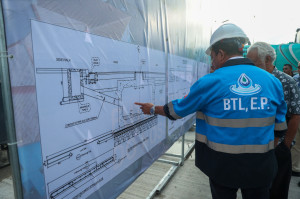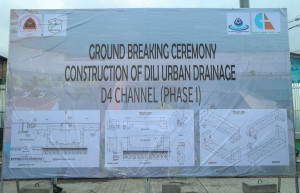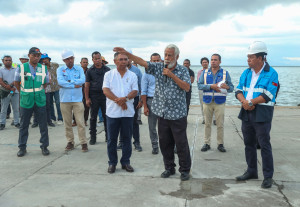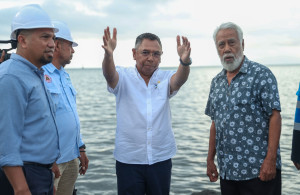Prime Minister accompanies launch of Dili Urban Drainage Project between Caicoli and Dili Port

The Prime Minister, Kay Rala Xanana Gusmão, accompanied by the Minister of Public Works, Samuel Marçal, launched the D4 drainage project on September 8th, 2025, aimed at mitigating recurrent flooding in the capital through an intervention extending from the Caicoli area, next to the Police Headquarters and the PCIC building, to the edge of the Port of Dili The project the construction and rehabilitation of four-meter-wide channels along the route to the coast, in order large volumes of water to be channeled directly into the sea. 




In the ceremony, the Head of Government recalled that, “for many years, during the rainy season, accumulated water overflowed, blocked roads, and entered homes in several communities. “For this reason, he stressed, “the drainage project now launched will allow large volumes of water to be accumulated and drained.”
Xanana Gusmão said he was confident that, once completed, the project would substantially reduce the risk of flooding affecting the communities of Caicoli and called on the company responsible to ensure rigor and quality in its execution, stressing that “the funds used belong to the people.”
The Minister of Public Works pointed out that flooding in Dili is a recurring problem and that the current capacity of the canals, particularly in the area of the traffic near the Police monument, “is insufficient for the volumes of water that occur during heavy rains. He recalled previous studies carried out with Portuguese consultans, who had already identified the need to review the drainage plan and create infrastructure capable of collecting and conveying water from Caicoli, Vila Verde, and Audian to the sea. “If we change the design of the drainage channels and install filters to retain solid waste and plastics that block the flow, we can significantly reduce the risk of flooding in Caicoli, Vilaverde, and Audian. We may not eliminate 100% of the problem, but we will be able to solve about 99% of the situations.” He affirmed.
The official also explained that the width of several existing channels is around 70 centimetres, which makes it impossible to absorb high flows, adding that technical teams have identified critical points and regularly cleaned them to restore normal drainage.
The ceremony was also attended by the President of the Executive Committee of Bee Timor-Leste, E.P. (BTL, E.P), Gustavo da Cruz, the Director of the Engineering and Infrastructure Department of BTL, E.P., and other institutional representatives. END










































